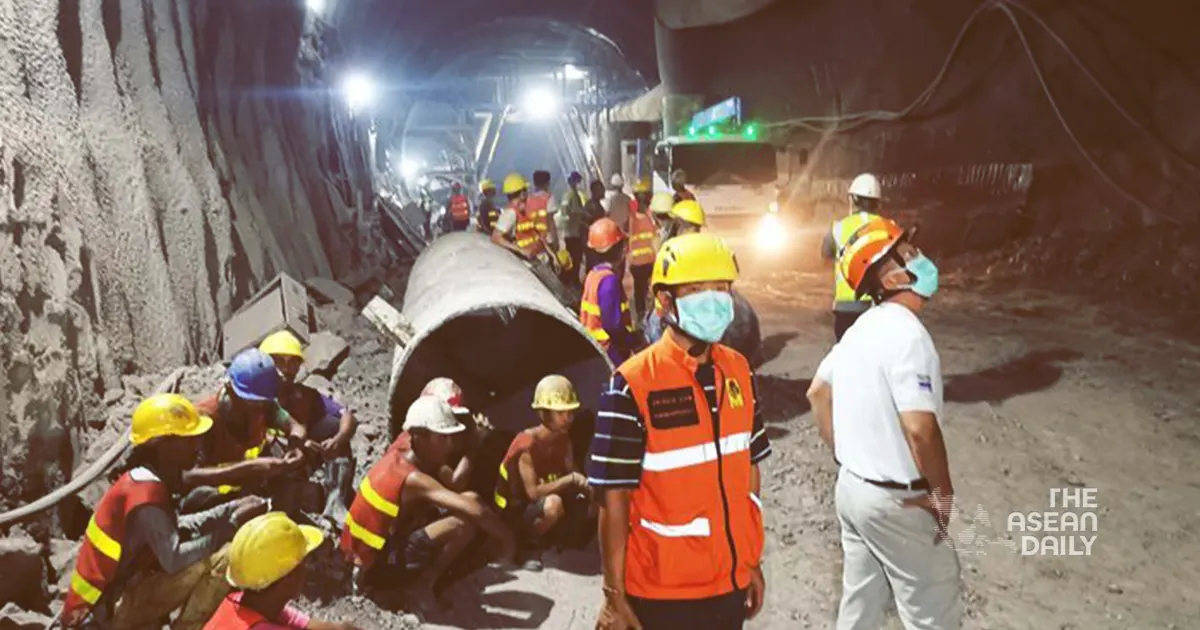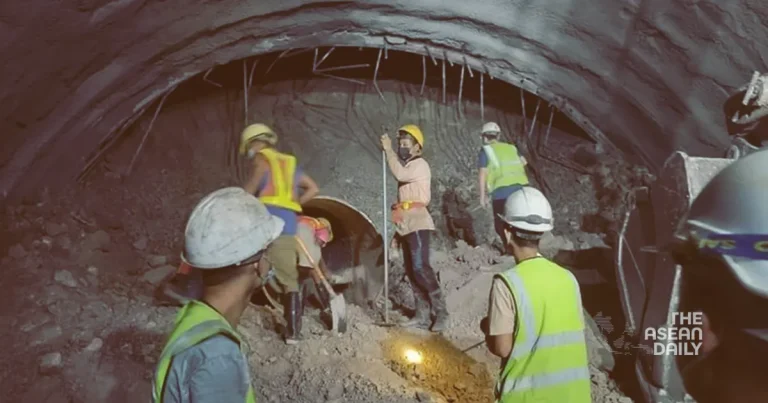27-8-2024 (BANGKOK) A glimmer of hope emerged on Tuesday as rescue efforts intensified to reach three workers trapped in a collapsed under-construction railway tunnel in Thailand’s Pak Chong district. Rescuers believe they may be on the verge of making contact with the men after a rescue tube being driven through the rubble reportedly struck what is thought to be one of the workers’ vehicles.
Kanatchon Sricharoen, the Pak Chong district chief, reported that a scanner and a sniffer dog detected signs of human life on Monday evening, bolstering the spirits of the rescue team. Later that night, vital signs were detected from one location, though not from the two others where the workers were believed to be.
The collapsed section of the tunnel begins approximately 1.6 kilometres from the entrance, which is situated near Khlong Khanan Chit train station. The three workers – a Chinese backhoe driver, a Chinese foreman, and a Myanmar truck driver – are thought to be trapped about 600 metres further inside.
According to the provincial public relations office, the rescue tube, measuring 1.2 metres in diameter, made contact with what is believed to be a vehicle at around 11.30pm on Monday. In response, two additional tubes, each about 40 millimetres in diameter, are being inserted through the larger tube to increase the air supply inside the tunnel.
Rescuers are also taking measures to reinforce the tunnel’s concrete walls, aiming to prevent further cave-ins. Reports from rescue workers indicate that soil and rocks continue to fall inside the tunnel, adding to the complexity and danger of the operation.
The collapsed tunnel is a part of the ambitious Sino-Thai high-speed railway project, which aims to connect Bangkok with Nong Khai province on the Laos border. The incident occurred on Saturday night during the construction of the planned 8-kilometre tunnel in tambon Chan Thuek, trapping the three workers and their vehicles – a backhoe, a truck, and a car.

As the rescue operation enters its fourth day, the race against time becomes increasingly critical. The ability to maintain a steady air supply and prevent further collapses are paramount concerns for the rescue team. The detection of vital signs has provided a much-needed boost to morale, but the team remains acutely aware of the challenges that lie ahead.




